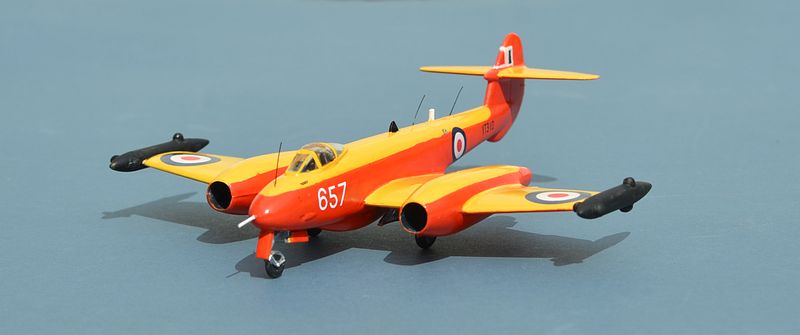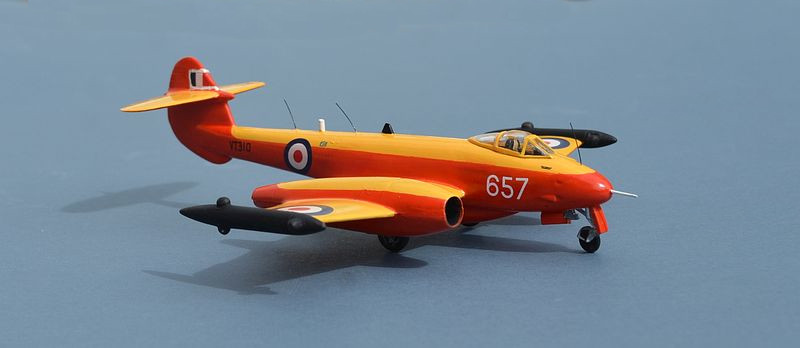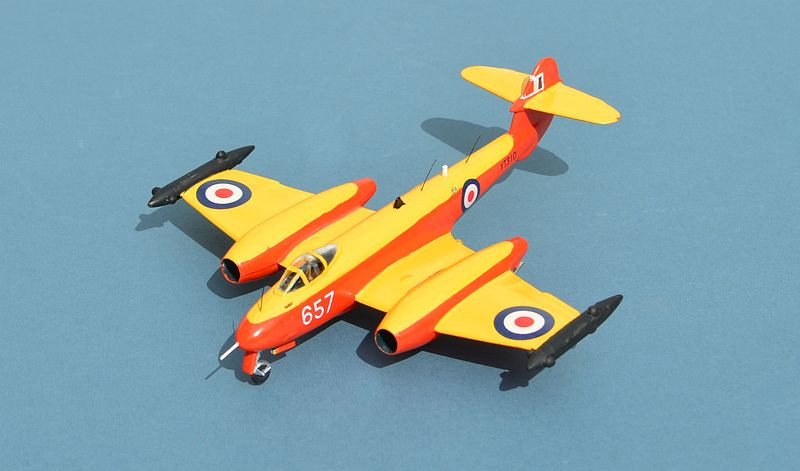May 2024 Part 2
Gloster Meteor U.15 Target Drone
Gloster Meteor U.15 Target Drone
728B Squadron, Fleet Air Arm
RNAS Hal Far, Malta, 1960
FROG 1/72 with Scratch Conversion
As a young modelling and aviation enthusiast, I was never greatly inspired by the Gloster Meteor. It always seemed to be too much of a cobbled together affair, never really top of the range performance. However, it has grown on me since then and each time I start a Meteor model I am impressed by the simple, functional and elegant shape of its airframe. It looks much more modern that it has any right to be.
The Meteor prototype, built to Specification F/9/40, saw its first flight in 1943,powered
by an early Power Jets W.2 jet engine, subsequently replaced by Halford H.1 engine
then the Whittle W.2, then the Metrovick F.2 engine (these were very early days for
jet propulsion). The first production aircraft flew in January 1944 and the type
was cleared for operational use in July 1944 as the Meteor F.Mk.III, powered by the
Rolls Royce Derwent engine. Used initially to counter Nazi V.1 Flying Bombs (14
were shot down by Meteors using their 4x20mm Hispano Cannon), even though it was
deployed to mainland Europe after D-
The Meteor F.4, powered by the longer and more powerful Derwent V engine (a shrunk down version of the Rolls Royce Nene) was produced in greater numbers than any others. In November 1945 it set a new World Air Speed record of 606 MPH (raised to 616 MPH that September).
The RAF bought a great any Meteors, and once they were no longer suitable for front-
A number were also converted to radio controlled drones, used as targets for developmental
and routine test firing of air-
Link to many more Royal Navy aircraft on my Flight Deck pages
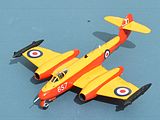
Building the FROG Meteor Kit:
FROG’s Meteor IV kit was first issued in 1970, remaining in production until 1974,
 with subsequent production in the USSR by NOVO and then a range of eastern block
producers up until around 1990. This was FROG’s second Meteor, the first being an
F.8 from 1955 that was festooned with “scale” rivet detail. 180,000 kits were produced
by FROG, with a large number also sent to Hasegawa to rebox and market them in the
far east.
with subsequent production in the USSR by NOVO and then a range of eastern block
producers up until around 1990. This was FROG’s second Meteor, the first being an
F.8 from 1955 that was festooned with “scale” rivet detail. 180,000 kits were produced
by FROG, with a large number also sent to Hasegawa to rebox and market them in the
far east.
As you would expect of that era, it is a very simple kit, but shape and parts fit is good, making it a reasonable and cheap base for conversion or upgrading. Panel lines are raised and a little heavy, but it assembles well and the decals on mine (over 50 years old, covering an RAF and Dutch aircraft) were in very good condition. Moulded in the dark blue (slightly brittle) plastic typical of late FROG, the parts fit together well, but the fuselage seems to be lacking effective locating pins, so needs careful handling whilst the glue sets to ensure it remains aligned – if you achieve this, then no filler should be needed.
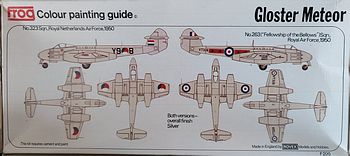
The kit decals cover two aluminium aircraft, and are relatively colourful, but I fancied doing something different, so when I came across the scheme for the U.15 Pilotless Target Drone operated by Fleet Air Arm 728B Squadron out of Hal Far in Malta, it just had to be!
Ninety former RAF F.4s were modified by Flight Refuelling Ltd and Ultra Electronics
as Meteor U.15 target drones, with the RN gaining a small number for their own use,
as targets for trials of the the new Seaslug missiles fitted to County Class Destroyers.
These drones included jettisonable wingtip camera pods to record how close a missile
came, with the pods recovered by parachute if needed and an infrared flare system,
with triple-
The aircraft were radio-
 The kit modifications were fairly simple – I trimmed the wings to fit the camera
pods (based on two drop tanks from the spares box with putty and card additions),
added the under engine flare dispensers (sprue) and removed one gun port from each
side (no guns were carried). Having decided to invest some effort in the kit, I
then decided to smarten up the main wheel bays with a little plastic strip. Decals
come form the kit and the spares box, based on a profile in the Bryan Philpott book
“Meteor” that I picked up for the grand total of £3.99 at our local Oxfam Book Shop.
The kit modifications were fairly simple – I trimmed the wings to fit the camera
pods (based on two drop tanks from the spares box with putty and card additions),
added the under engine flare dispensers (sprue) and removed one gun port from each
side (no guns were carried). Having decided to invest some effort in the kit, I
then decided to smarten up the main wheel bays with a little plastic strip. Decals
come form the kit and the spares box, based on a profile in the Bryan Philpott book
“Meteor” that I picked up for the grand total of £3.99 at our local Oxfam Book Shop.
Painting red and yellow is always a bit of a challenge. I added an overall white undercoat, then 2 yellows, then 2 reds in the red areas. To finish, two coats of Klear added the required shine. Decals came from the original kit, plus some Xtradecal and Modeldecal numbers
This was a very quick and simple update of an older kit to add some interest, as well asadding another Royal Navy meteor to my collection. Accuracy (e.g. of the pods) was not the priority as long as it looked convincing.
I haven’t done one of these “off the cuff” scratch conversions for a long time, but it has always been an aspect of modelling that I really enjoy, adding my own unique “stamp” to a build.
Postscript: With the demise of FROG in 1976, production of the Meteor kit moved
to the Tashoyshka factory in Tashkent, USSR (now Uzbekistan), with moulded plastic
returned to NOVO in the UK for repackaging and resale, as well as distribution to
domestic Soviet outlets. It remained in production for a long time, but with steady
deterioration of the moulds due to insufficient maintenance (it has also been reported
by some Russian sources that some FROG moulds were buried in secret locations between
production runs to prevent zealous Soviet official from seizing them as non-
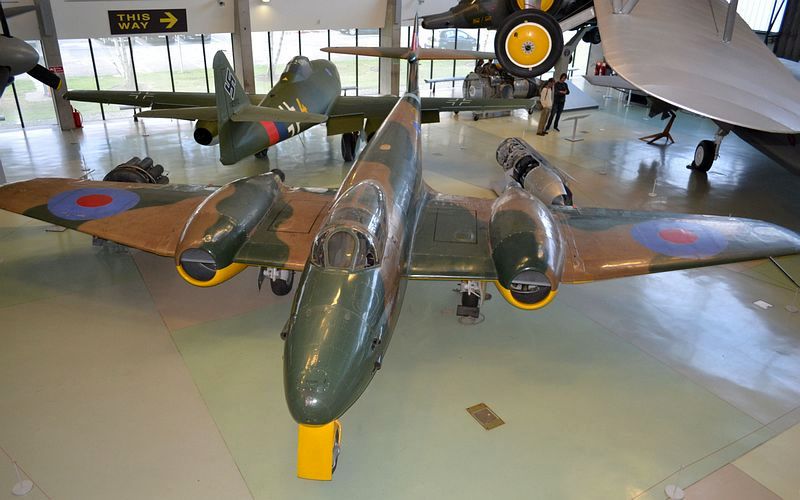
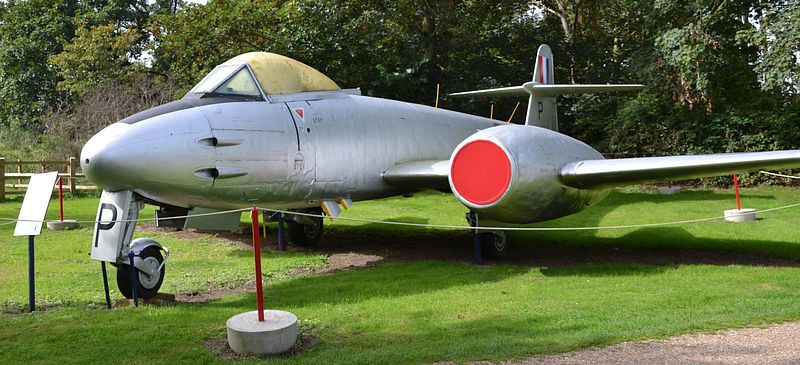

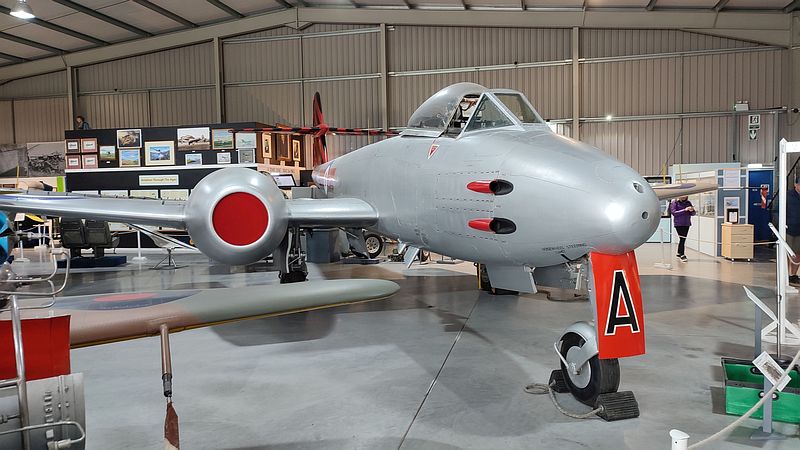
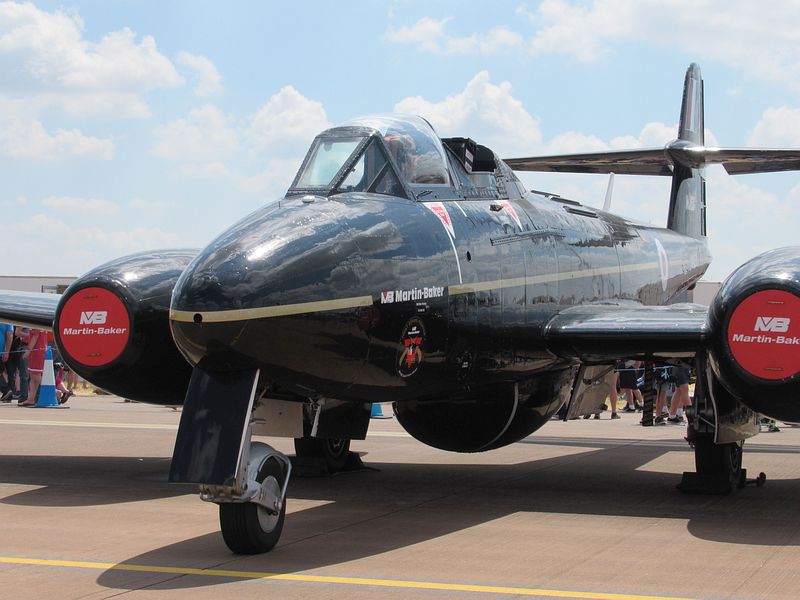
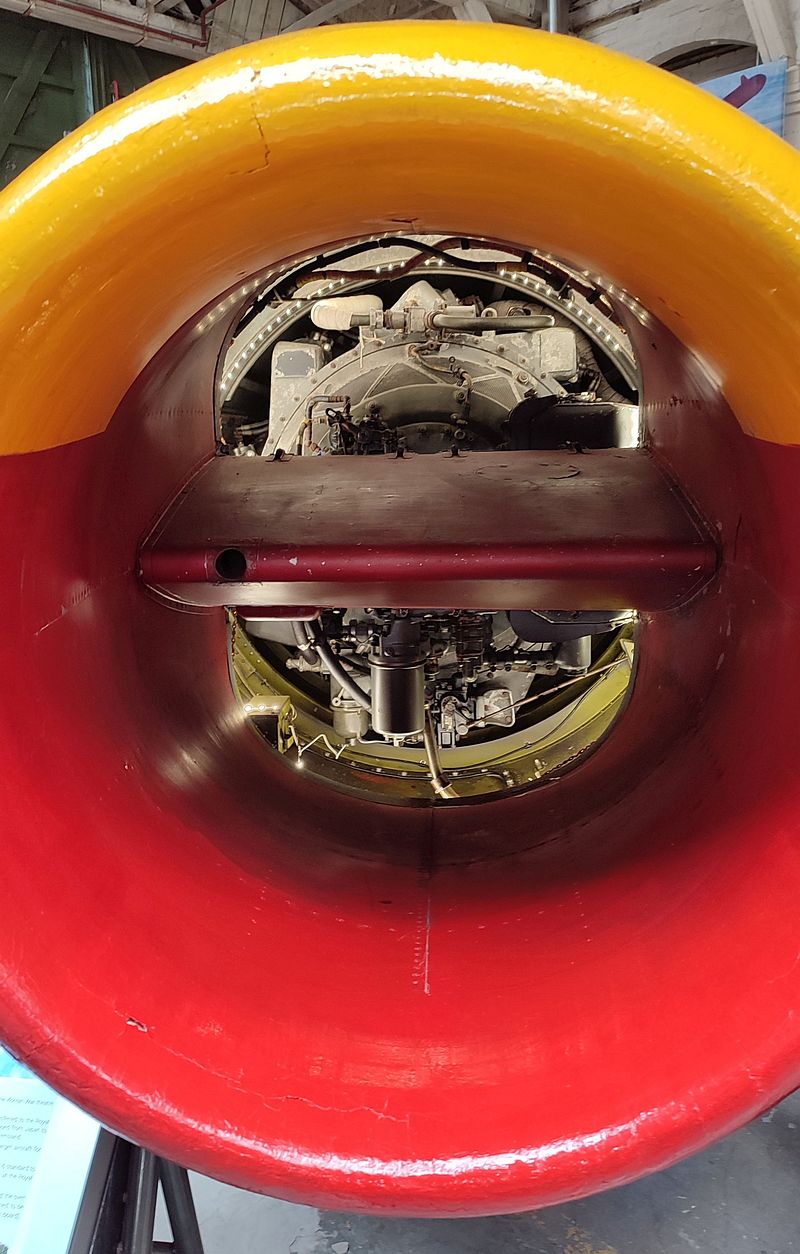
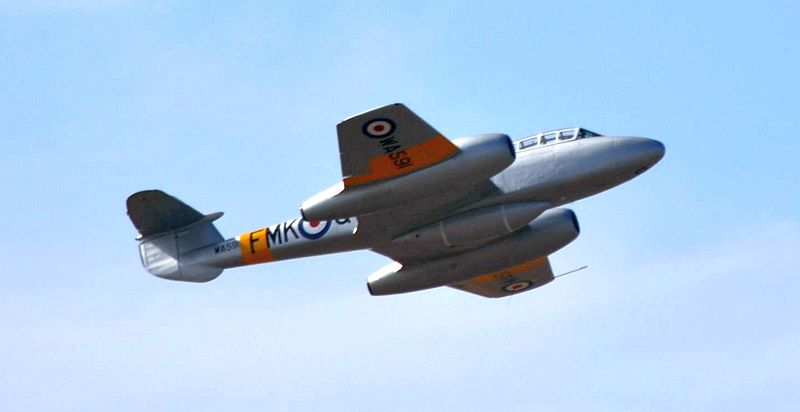
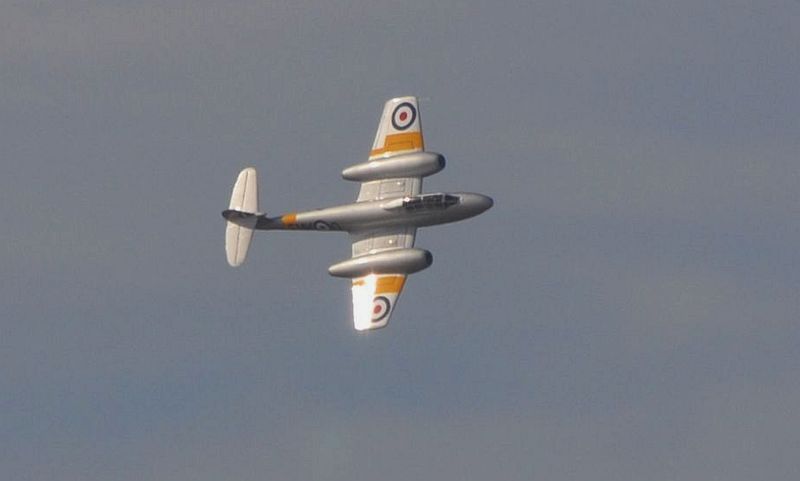
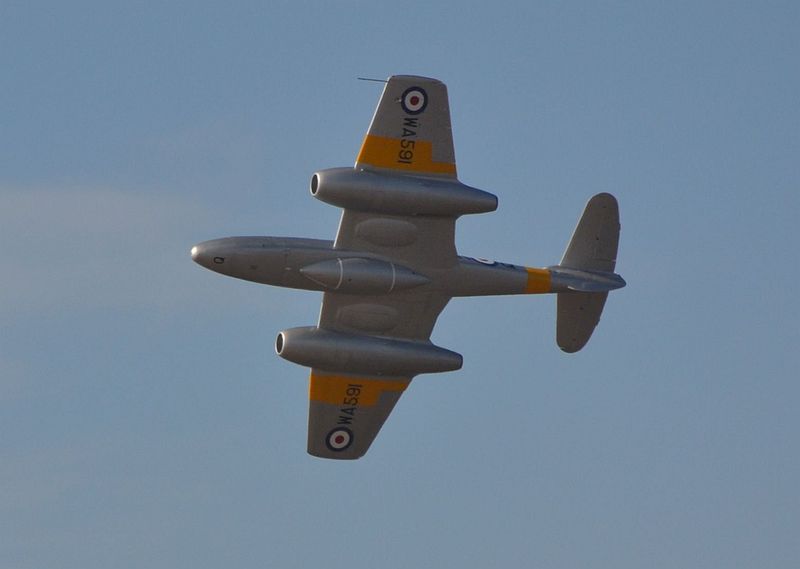
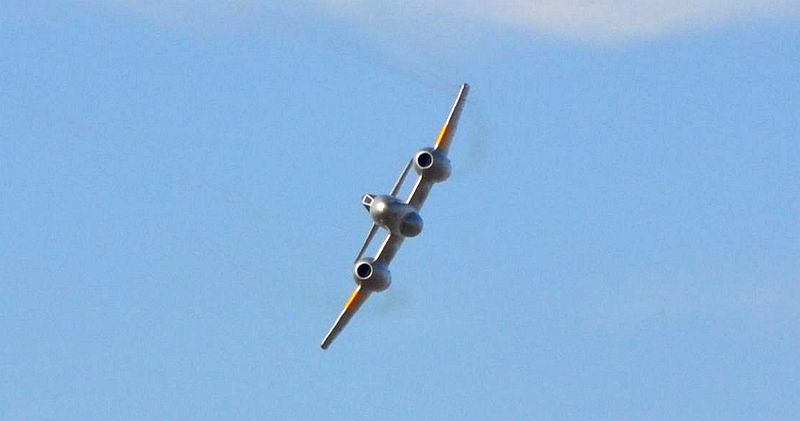
The Real Thing: There are a good number of Meteors displayed in UK museums. Most of these are the later F.8 design, with a more modern cockpit canopy and the slimmer, longer “high speed” tail.
There are also 2 T.7 trainers flying that I am aware of, both of which are pictured below. The black aircraft is operated by Martin Baker Ltd to test ejector seats.
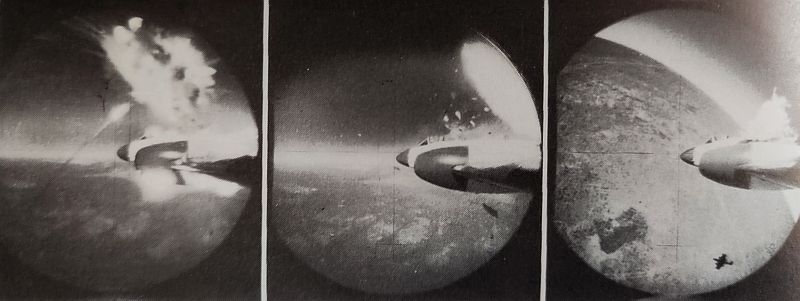


Below: VT 310 during her time with 728B Sqn in Malta, as shown in the Bryan Philpott book.
Below: This dramatic shot taken from the port camera pod shows a Seaslug missile destroying a U.15 drone
Below: A Seaslug missile launches from the missile trials ship HMS GIRDLE NESS.
You can see very little of the actual missile because of its massive boosters. © IWM (A 34097)
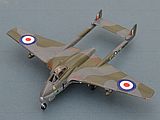

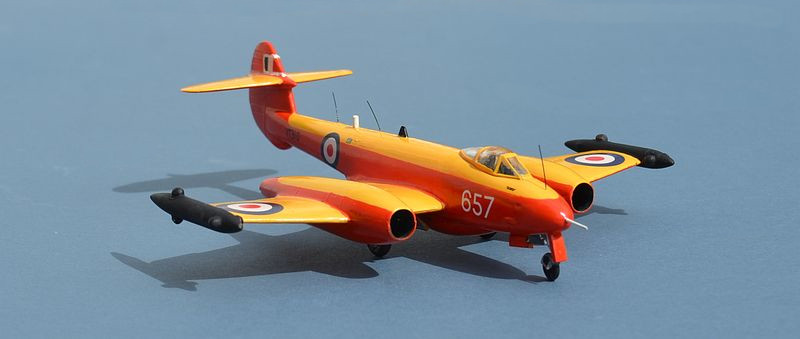
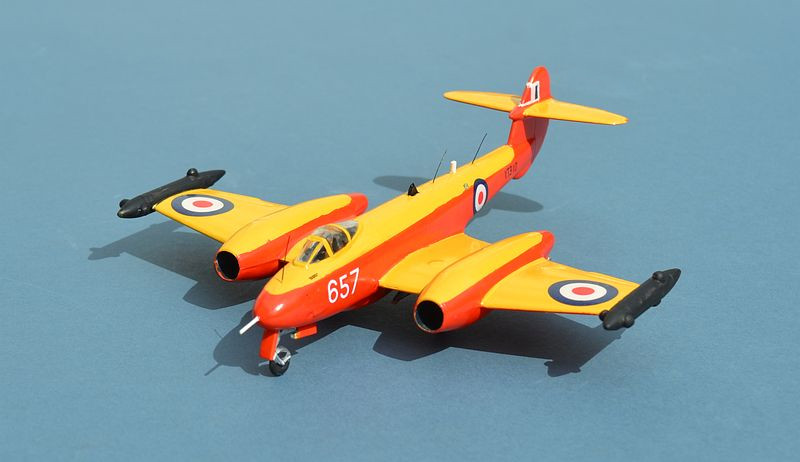
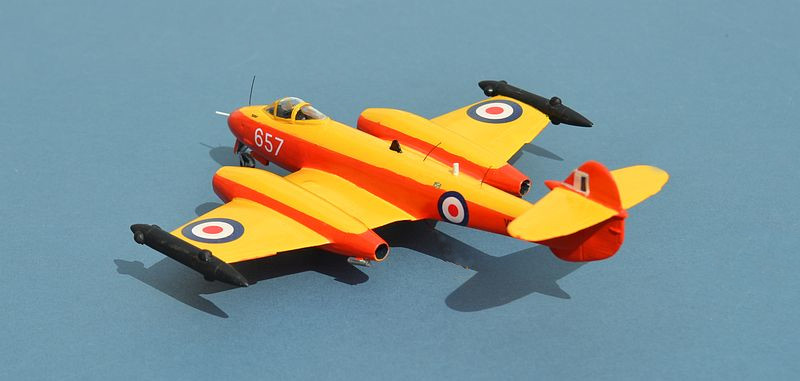
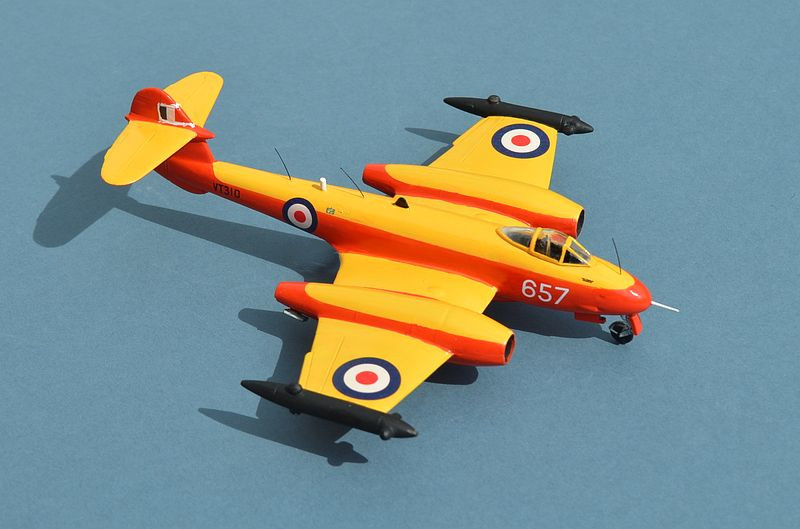

Above: my “shower” of Royal Navy Meteors. From left to right, TT.20, Sea Meteor Mk.III, U.15 and T.7
